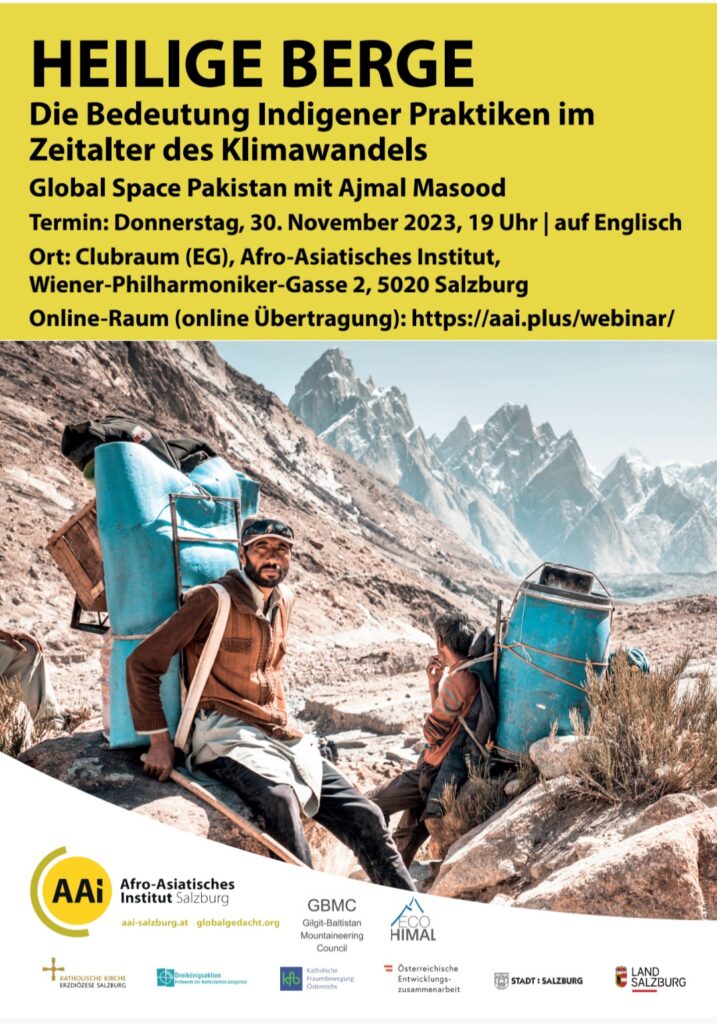
- Indigenous communities in the Hindukush-Karakoram-Himalaya (HKH) region hold profound spiritual connections with their natural environment. Traditions such as glacier grafting (merging black and white glaciers), ritualistic irrigation ceremonies (Rajaki/Il Khudai), and the preservation of sacred trees (e.g., junipers) reflect ancient climate-aware customs.
- Adherence to these practices often surpasses compliance with government laws (e.g., Bhutan bans climbing above 6000m based on spiritual beliefs).
Concept of Holy Mountains
- Mountains in the HKH region are revered as sacred entities, often inhabited by fairies, spirits, or deities.
- Local legends that highlight the sacredness of mountain landscapes — such as tales of fairies in meadows or prohibitions against killing mountain goats — illustrate a worldview where nature commands deep respect.
- Rivers like the Indus and “Sujukum Chhishko” were worshipped and protected through rituals.
- The notion of sacredness promotes a balanced ecosystem where humans, nature, and the universe coexist harmoniously
- Modern Significance Climate change, mass tourism, and modernization threaten this traditional knowledge.
- Recent catastrophes in Pakistan highlight the urgency of revitalising and integrating indigenous insights into contemporary policies.
- Viewing mountains as sacred and recognising indigenous communities as custodians of the environment are crucial for securing a sustainable future.
Conclusion
Ancient belief systems offer effective environmental ethics founded on respect, harmony, and preservation. Reviving these traditions is indispensable amidst the climate crisis
Authored by: M Ajmal K. Masood
Founder of Karakoram Basecamp – advocating the “Save the Third Pole” campaign.
